Additional notes (click to expand)
Medicinal
Culpeper (roots): ‘... strengthens the heart exceedingly, and is a singular remedy against pestilence and poison ...’
Culpeper, Nicholas. (1650). A Physical Directory . London, Peter Cole. p.3
Dyspepsia (1836).
Stephenson, J. & Chrchill, JM (1836) Medical Botany . London, John Churchill
Has Traditional Herbal Medicine Registration (THMR).
Notes by Henry Oakeley from Lindley's 'Flora Medica' (1838): Lindley quotes a source that reports that Laplanders ate the stems of Archangel, roasted in hot ashes, for chest complaints. They also boiled the flowers in milk to ‘promote sweating in catarrhal fevers and to strengthen the bowels and stomach in diarrhoea’. It was introduced to England by John Tradescant the Elder, possibly in 1618 from Archangel in Russia. We grow it in the European beds above the lawn, to the right of the pomegranate where it flowers in April. It was much recommended in 1665 as a preventative against the Plague in London, and as an aphrodisiac, but is better remembered (despite the latter usage) for being candied and used as a cake decoration (Maggie Campbell-Culver, The Origin of Plants, 2001). Angelica gigas, flowering in August, is now being investigated as a treatment for dementia.
Lindley, John. (1838). Flora Medica, Longman, Orme, Brown, Green & Longmans
Nomenclature
Archangel, Wild parsnip
One of the problems of identifying the plants in the 'Pharmacopoeia Londinensis' (1618) is the lack of descriptions. An example is Angelica (Culpeper (1653) says it is too well known to need a description). Angelica is in the 'Pharmacopoeia Augustana' (1613) from which the 'Pharmacopoeia Londinensis' was derived, and two are identified there as A. verae and A. sylvestris. It is not in the 'Dispensatory' (1546) of Valerius Cordus from which the first edition of the Augustana (1564) was derived, nor in that edition. Lyte’s translation of 'Dodoens Herbal' (1578) page 296 has A. sativa or Garden angelica and A. sylvestris or Wilde Angelica. So does Leonard Fuchs (1542) who says they are good against poison (and Culpeper repeats this). So does Gerard (1633). Both Fuchs and Lyte have similar woodcuts for the two species. Gerard has a third which he calls Archangelica but his botany was suspect.. So in the pre-Linnean classification there were these two Angelicas, which would have been used by the apothecaries. Linnaeus in his 'Species Plantarum' (1753) renames A. sativa as A. archangelica; A. sylvestris remains unchanged. In his 'Materia Medica' (1782) Linnaeus has both as being used in pharmacy, with the same properties (neither of which are as antagonists of poisons). James E. Smith’s 'English Botany' vol 3 (1836) says A. archangelica is rare in the wild in England, and was first seen in the wild near Birmingham by Dr William Withering (1741-1799), and previously was only a garden plant in England. It is an alpine (Pyrenees) plant in Europe (other writers say Lapland, and some believe that Tradescant found it in Archangel but it was grown in England from the mid 16th century, 100 years before Tradescant the younger). Every writer who comments says that A. sylvestris is medicinally inferior to A. sativa/archangelica (including Culpeper’s heirs (1790) in 'The English Physician Enlarged' who adds that the wild one may be safely used). Lovell’s 'Herbal' (1665) says the garden one is best, and the wild one is less effectual. Ditto Parkinson 'Theatrum Botanicum' (1640). Ditto Coles’ (1657) in 'Adam in Eden'. Pomet’s 'History of Druggs' (1712) is using the garden angelica. Miller’s 'Herbal' (1722) is using the garden angelica (ie A. sativa/archangelica). In 1846 in the German 'Pharmacopoea Borussica' Radix Angelica is Angelica archangelica, and also in Anthony Todd Thompson's 'London Dispensatory' (1811).
So, the final one used for pharmacy was Angelica archangelica (previously A. sativa), and the names A. verae and A,. sylvestris in the Augustana suggest that A verae (ie ‘true angelica’) is a synonym of A, sativa.and may have been the preferred one in pharmacy in 1613. However, Angelica sylvestris was also used, and while the garden one was imported from the Continent or grown in gardens, English apothecaries may have made do with A. sylvestris in 1618.
Oakeley, Dr. Henry F. (2014). Conium maculatum, Hemlock, Cicuta, Conio.
link
Other use
Claimed to have been introduced by the Tradescants from Archangel in Russia early in the 17th century, it was widely recommended against the plague. It was also thought to be an aphrodisiac. The stems are cut up and now merely used - as candied angelica – to decorate cakes.
Oakeley, Dr. H. F. (2013). The Gardens of the Pharmacopoeia Londinensis.
Geographical distribution
- Asia-Temperate
- Europe
Podcast
Angelica archangelica L.
Family: APIACEAEGenus: Angelica
Species: archangelica L.
Common names: Angelica
Pharmacopoeia Londinensis name: Angelica
Distribution summary: Europe, Asia, Greenland
Habit: Perennial
Hardiness: H5 - Hardy; cold winter
Habitat: Rich, moist woods & streamsides
Garden status: Currently grown
Garden location: Pharmacopoeia Londinensis 1618 'Roots' (HSE 3)
Flowering months: July, August
Reason for growing: Medicinal, traditional herbal registration

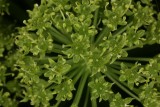
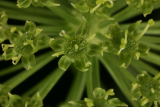
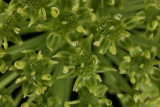
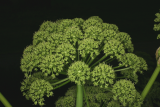
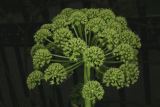
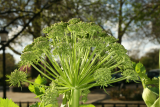


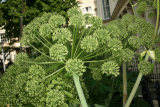
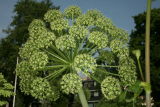
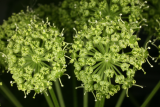
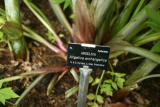
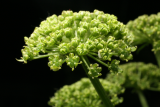

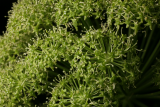
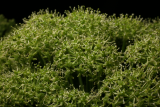
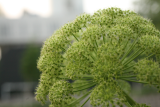
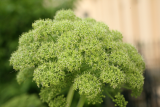
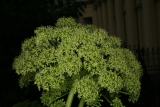
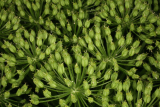
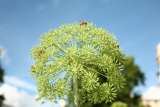
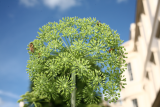
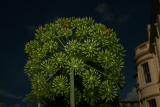
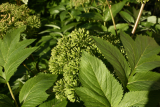
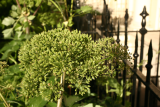
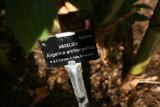
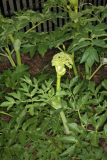
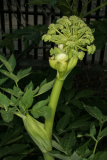
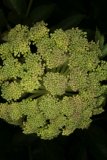
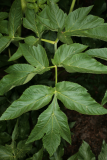
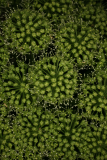
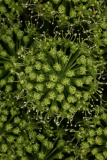
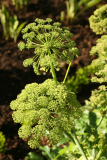
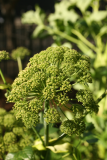

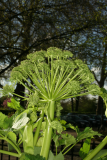
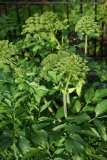
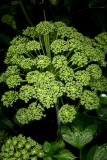
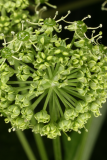

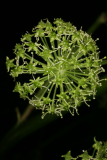
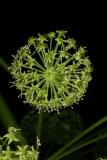
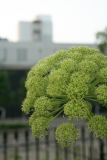

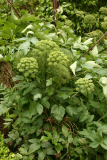
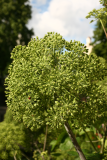
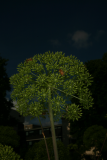
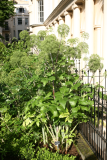
.JPG)
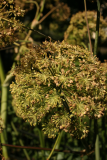
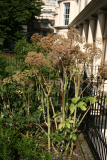
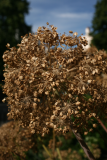
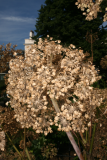
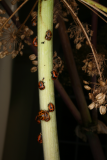
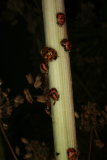
.JPG)